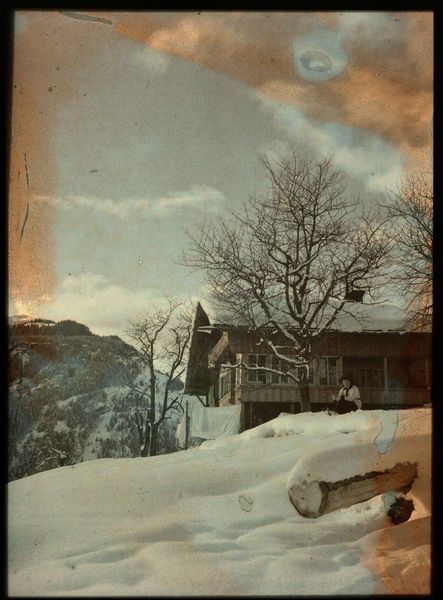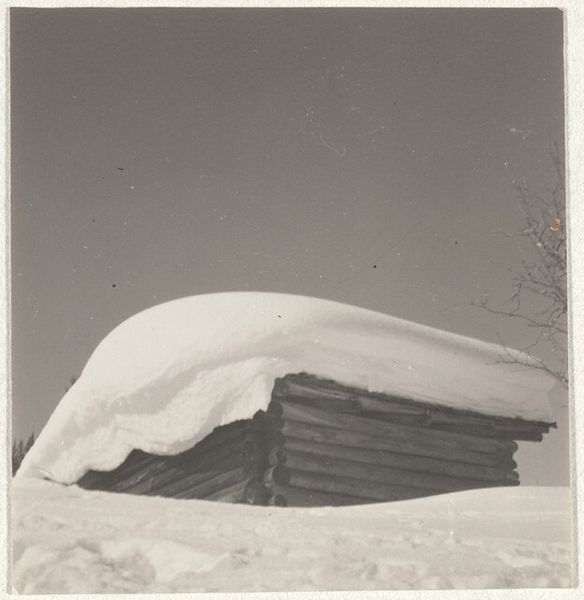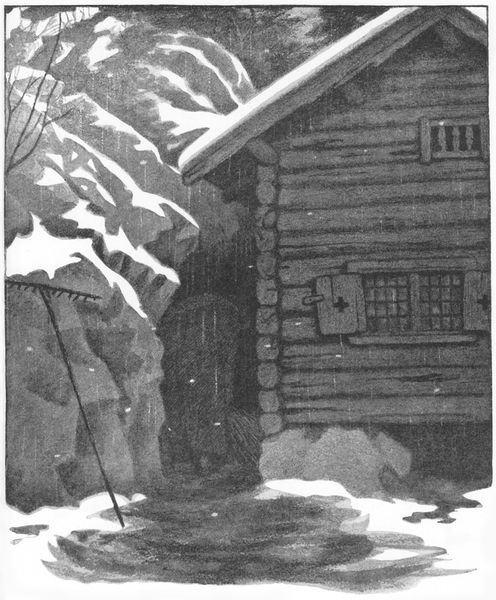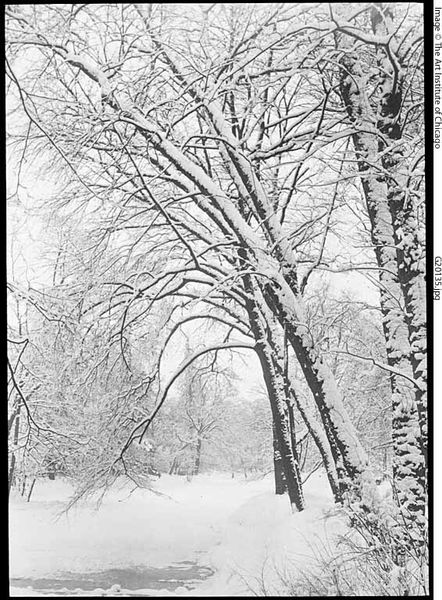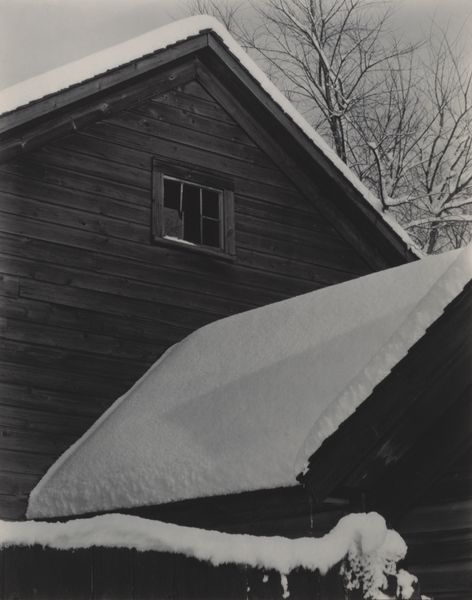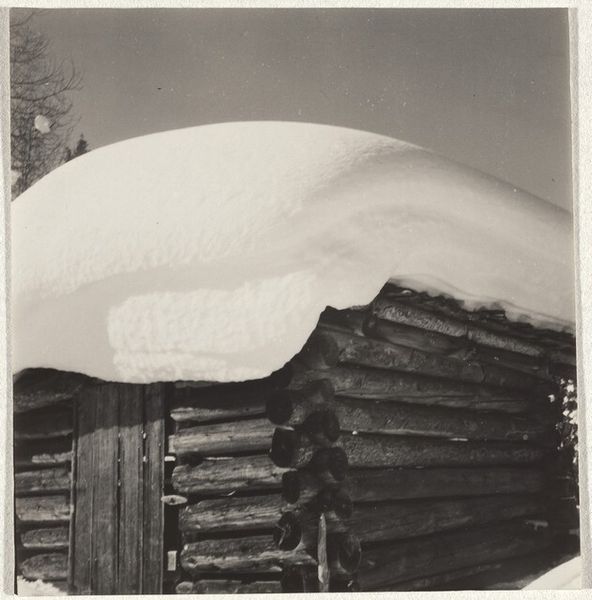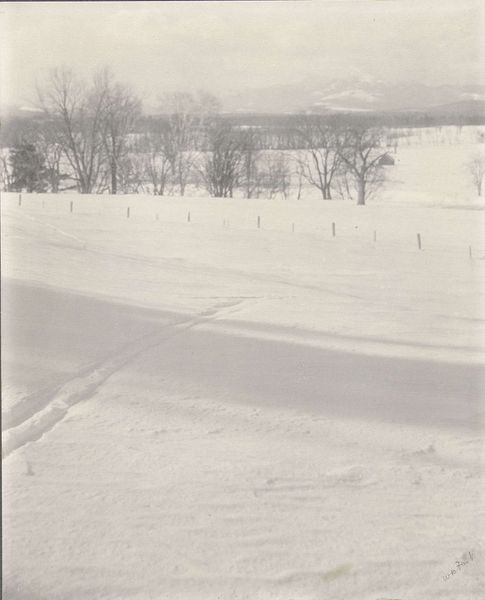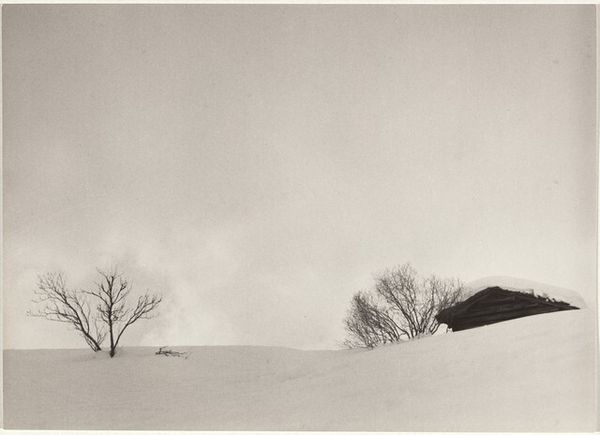
drawing, photography, pencil, graphite
#
drawing
#
landscape
#
photography
#
geometric
#
pencil
#
graphite
#
monochrome
Copyright: M.C. Escher,Fair Use
Editor: Okay, so we’re looking at M.C. Escher’s "Snow" from 1936, a pencil and graphite drawing that, honestly, feels pretty stark. It’s monochrome, all these hard lines depicting a building buried under snow. I can almost feel the cold! What do you make of it? Curator: Cold, yes, but also consider the odd warmth tucked inside those geometric angles, no? Escher was fascinated by tessellations, by structures fitting into one another, even as winter's isolating hand sweeps across the landscape. Look how those power lines hum against the snowy mountains... a visual poem, perhaps, about man versus nature... or is it nature accommodating man? What feelings bubble up as you stare? Editor: I suppose there is that weird juxtaposition. Civilization plunked right down in the middle of nowhere...it gives the piece an interesting tension. The solid blacks against the vast whites create contrast and interest too. But it’s hard for me to feel like this conveys warmth – it feels lonely. Curator: Lonely, you say? Good. Perhaps Escher felt a similar sense of removal. Isn't that telephone pole reaching towards something—connection maybe?— while simultaneously anchoring the dwelling to its isolated reality? It feels a little like a haiku written with graphite, doesn't it? Brief, intense, evocative. Does the foreground make you feel isolated too? Editor: Yes, seeing the details like the textures of the dried weeds almost makes the landscape more personal... less about 'man versus nature,' more like one man's winter. Curator: Exactly! You have to almost breathe it to truly see its beating heart. I always appreciate discovering new perspectives. Editor: Me too. It really highlights how complex even seemingly simple art can be.
Comments
No comments
Be the first to comment and join the conversation on the ultimate creative platform.
